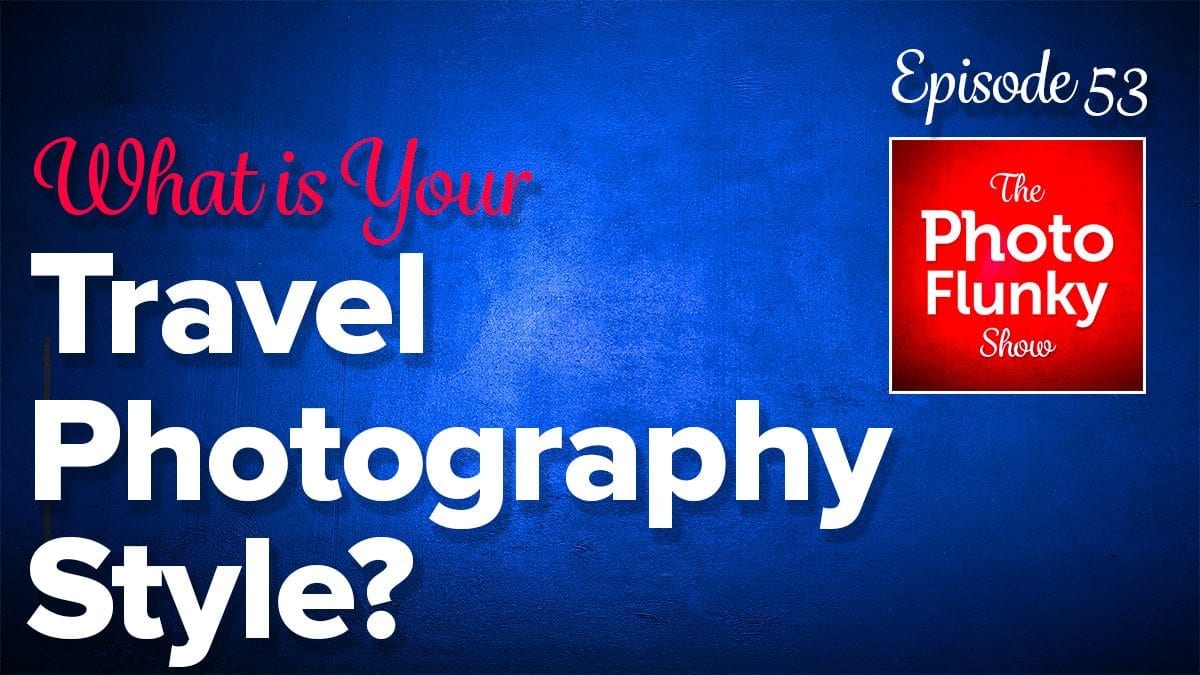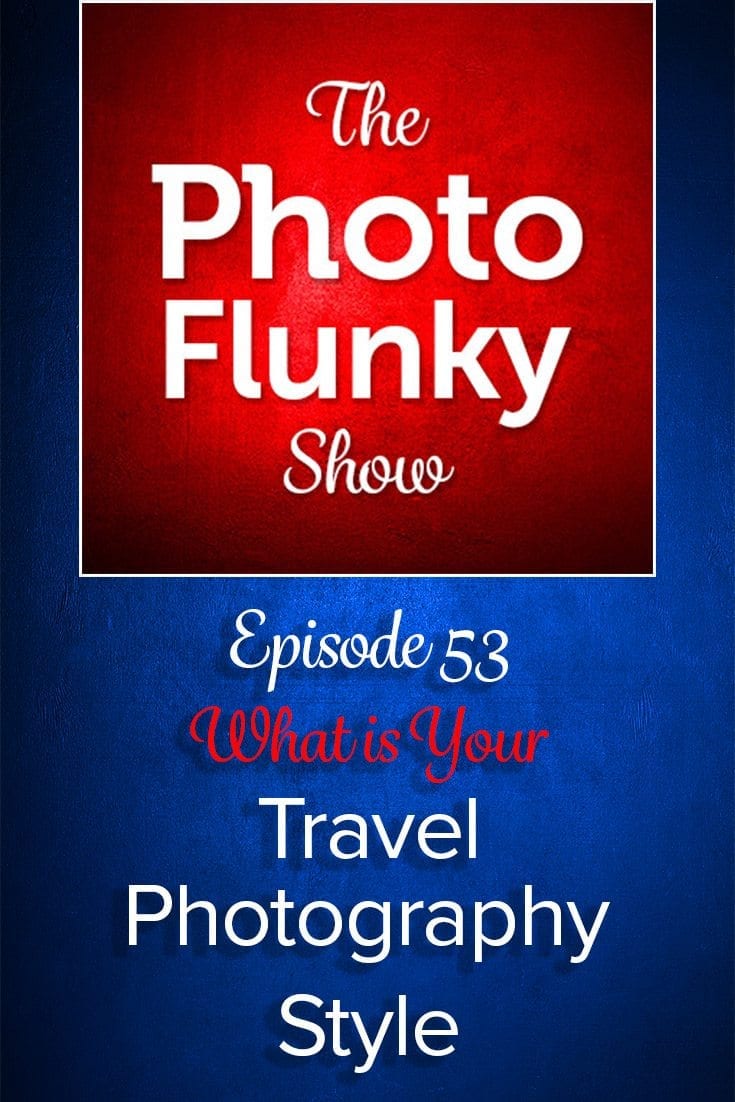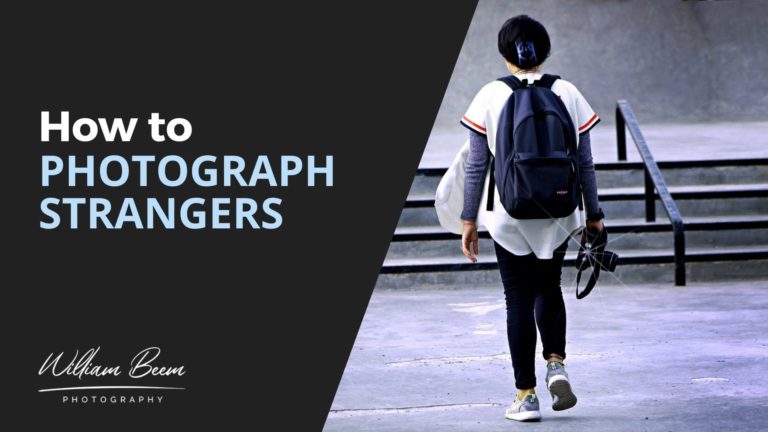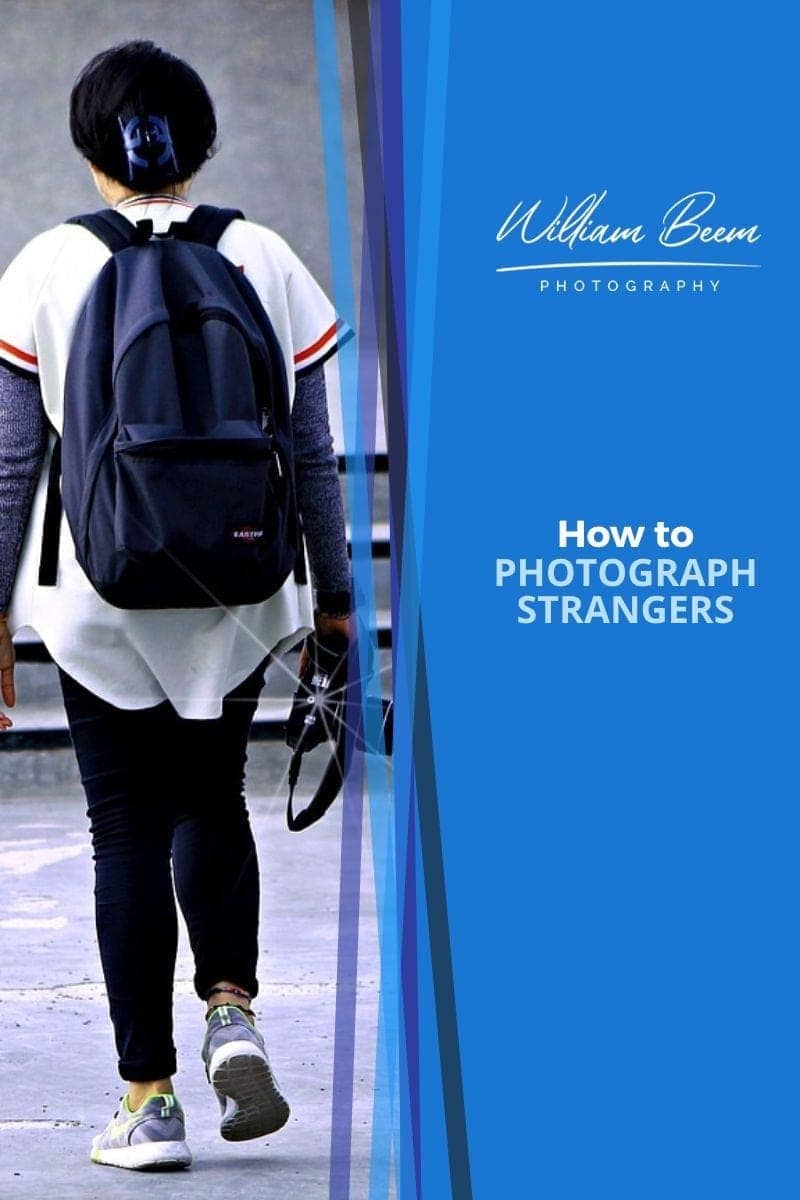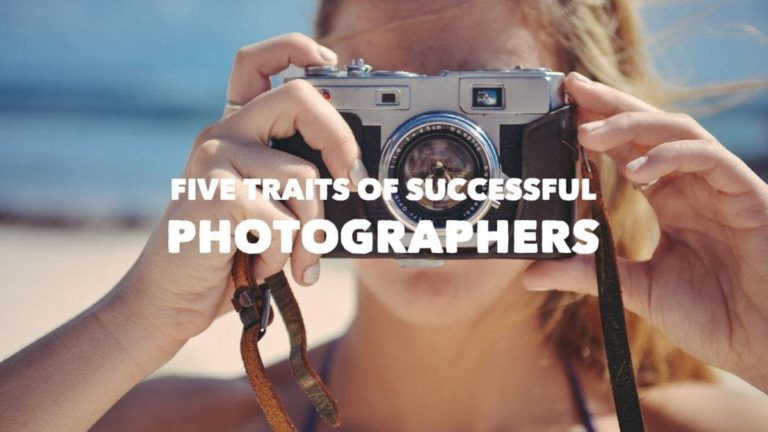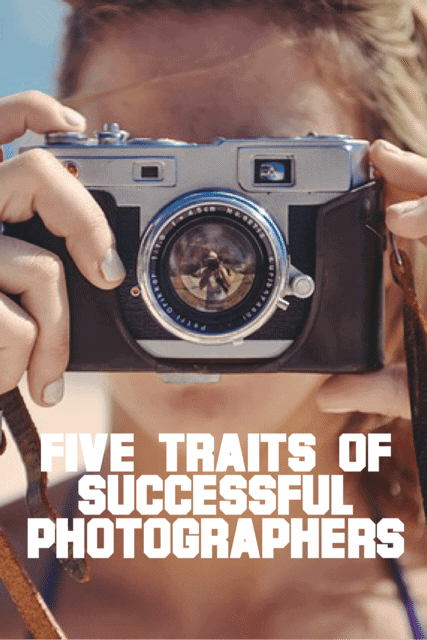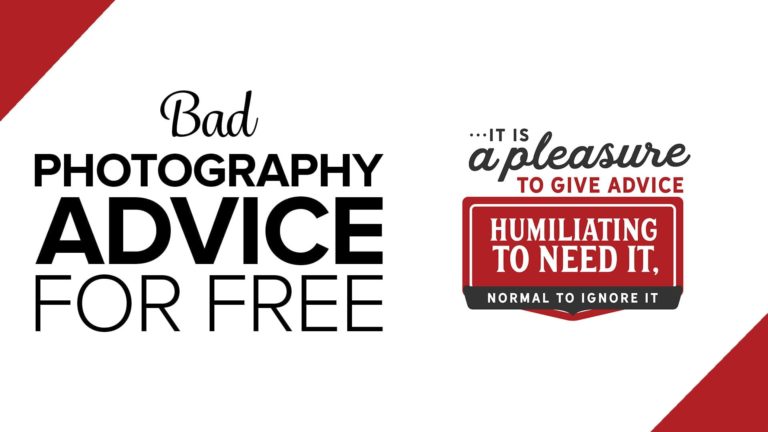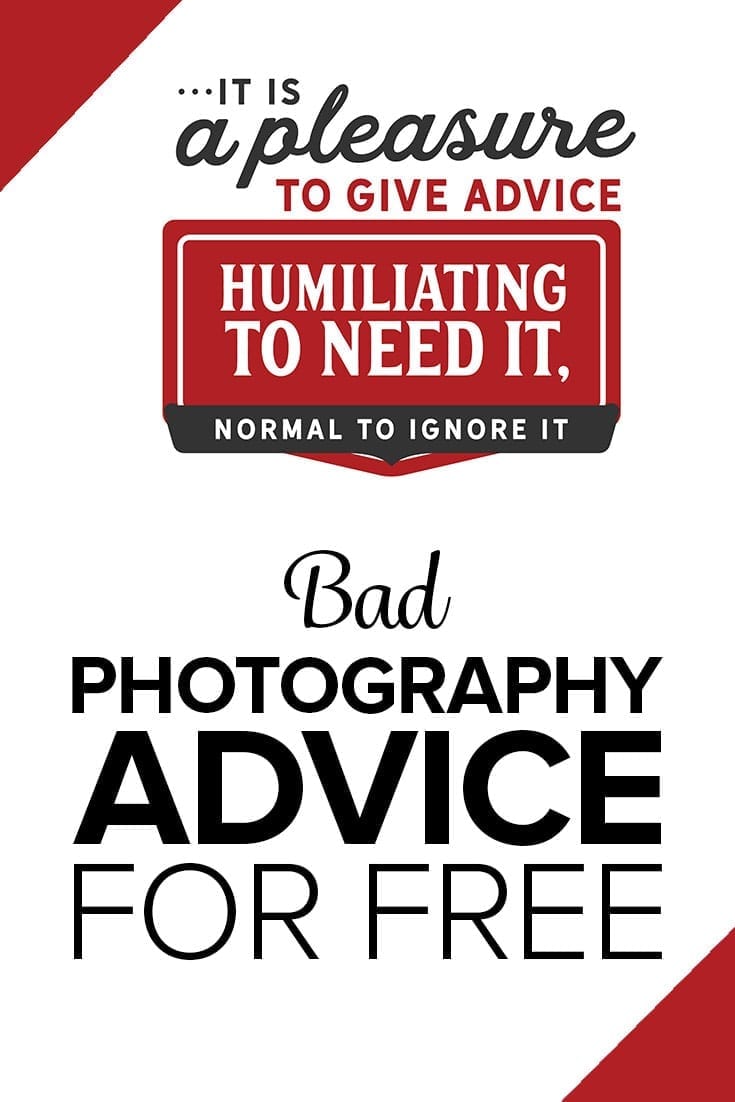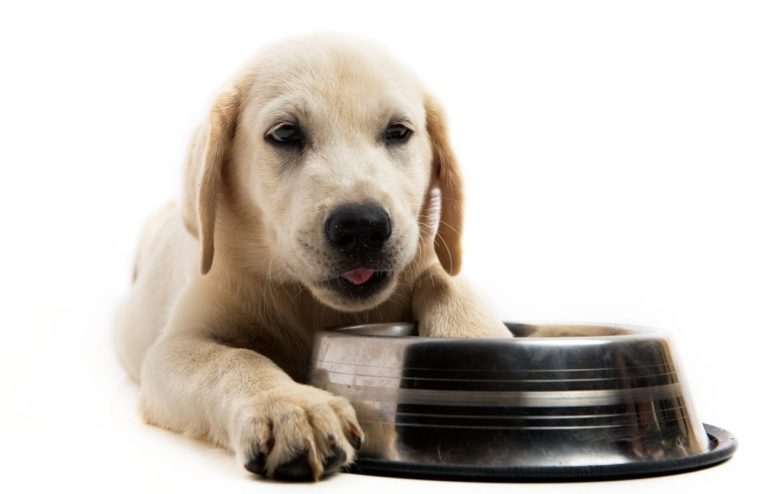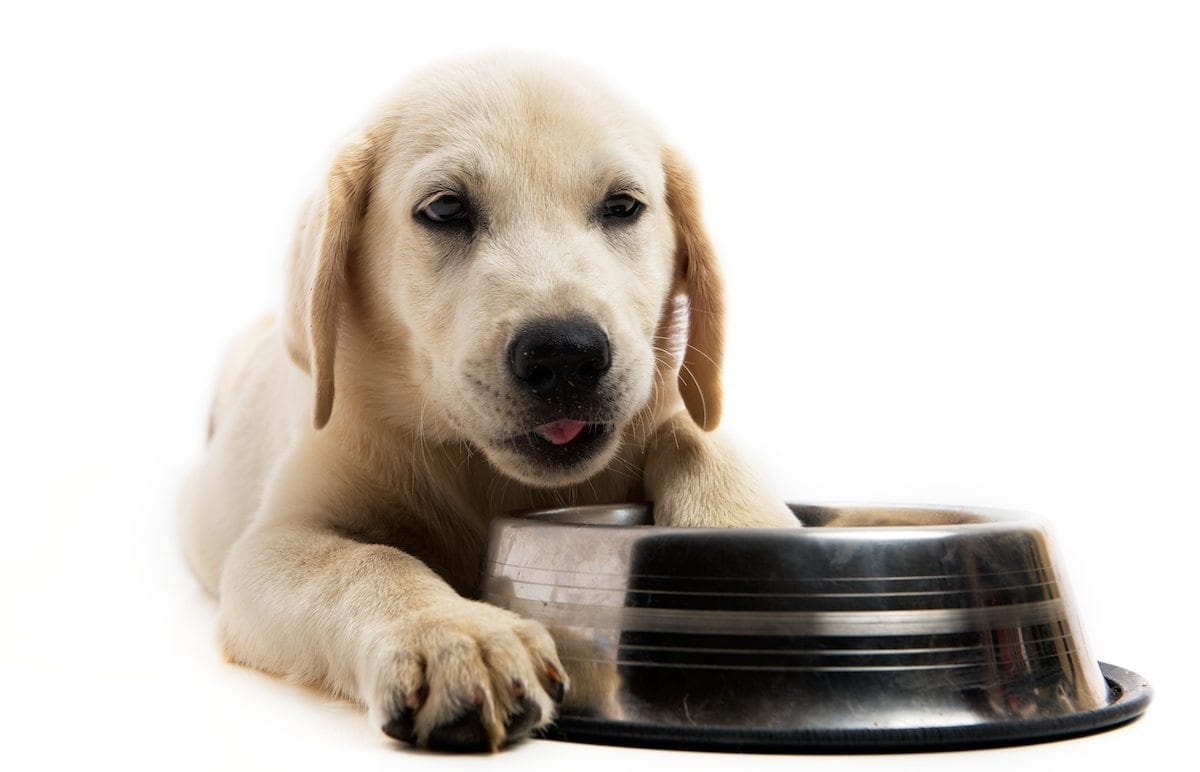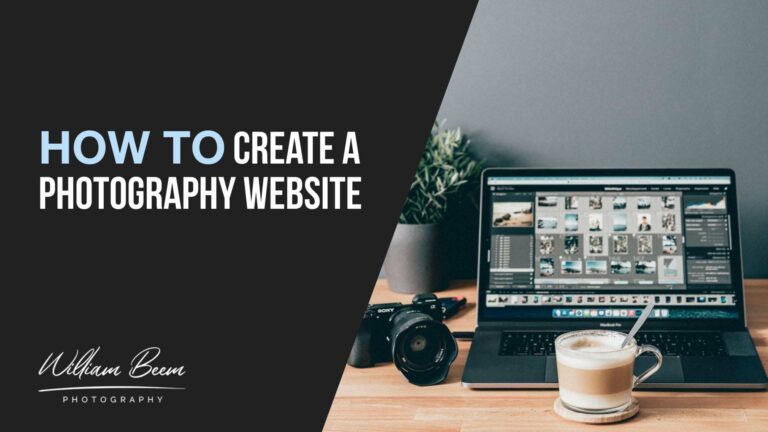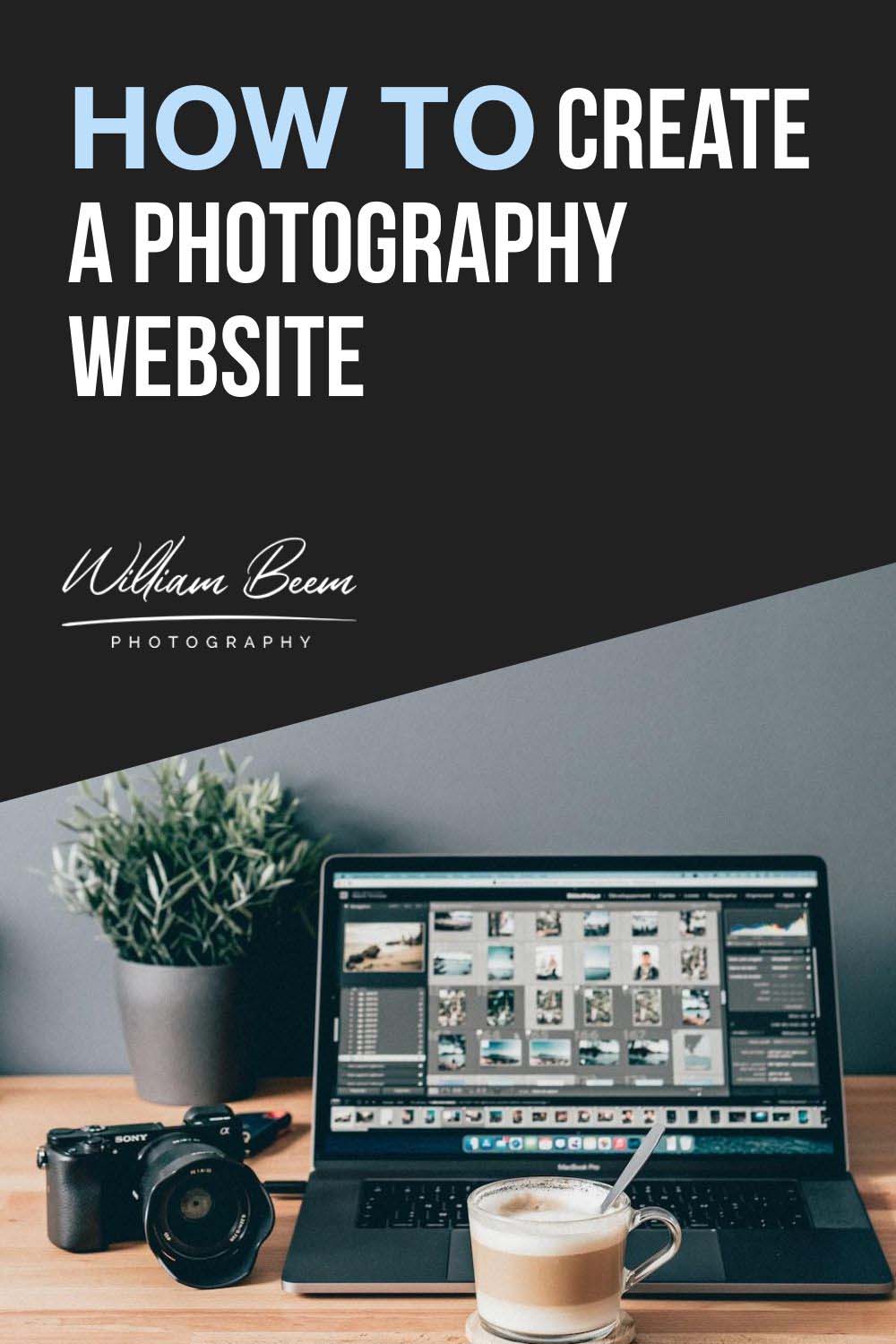Affiliate Disclosure: We earn a commission if you purchase through one of our links at no additional cost to you.
What is Your Travel Photography Style?
Thank you for listening to The Photo Flunky Show. We appreciate you and have some tips about developing your travel photography style.
What does that mean?
Your style is your own preference and unique way of composing a photograph. Yes, you can take a snapshot and than can be your photography style. You can also concentrate on a subject, like food or architecture. You can shoot interesting colors or reflections. Maybe tones and textures are your thing. Odd angles, abstracts or detail photos are all fair game.
Think about the kind of shots that interest you the most. It could be something challenging or perhaps just photos that have your own sense of beauty. Whatever photography style you develop, it’s something that is uniquely yours and can help identify your shots no matter what the subject.
What’s your travel photography style? Leave a comment or a link to show off your own work.
Subscribe to The Photo Flunky Show
Thank you for listening to The Photo Flunky Show. Make sure you get every episode by subscribing.
iTunes – https://williambeem.com/itunes
Stitcher – https://williambeem.com/stitcher
Google Play – https://williambeem.com/googleplay
Blubrry – https://williambeem.com/blubrry
THE PHOTO FLUNKY SHOW: Episode 53
Hey, thank you for joining the Photo Flunky Show, Episode number fifty-three.
We are talking about travel photography and more specifically, we are talking about the different styles that you can use while you’re taking your travel photos.
Stick around with us.
William: I think it’s funny that I say stick around. It’s like the show just started. Who’s going to turn me off right away?
Lee: Oh, I don’t know. That’s kind of scary, isn’t it?
William: Probably someone did, just because, but for those of you that stuck around, hi! My name is William Beem.
Lee: And hi! My name is Lee Beem and we’re glad you’re here!
William: We are absolutely glad you’re here. We appreciate you and before we get started we will let you know that show notes are going to be available williambeem.com/episode53. And as always, you can find a transcript of the show there for free.
If you want to subscribe, and we recommend that you do, because it just makes it easy for this to come straight to your device, got to photoflunky.com and you’ll find links there to subscribe on iTunes, Google Play and Stitcher and probably a few other things that I’ve forgotten about.
And finally, on social media, we are out there. We’re alive. There are links on our show notes and of course we’ll have them on the website to you can follow us on Facebook, Twitter, Instagram and Pinterest.
And even YouTube! I’ve got to put my YouTube channel up there.
Lee: You should put your YouTube channel up there because you’re putting some nice tutorials up there as well.
William: I’m going to be putting more things on YouTube lately. I’m kind of switching things around, but we’re not going to talk about that today. Today we are going to talk about travel photography and the different styles that people have.
So really, what it comes down to when we’re talking about photography styles – particularly with travel – is kind of how you approach the photographs that you want to take.
We are all going to go out there and take our snapshots. I think that’s a given, even if you’re just taking an iPhone, you’re going to get your snapshots because you want your memories like that. But if you want to come back with something unique or something that someone looks at and says, “Oh, I know who took that. That style belongs to William/that style belongs to Lee...” Then that’s where your style kind of comes in and it’s really kind of ... what are your preferences in photography?
Lee: Yeah.
William: Lee, one of yours I know is you like your detail shots.
Lee: I do. I really do like my detail shots.
William: But, why is that?
Lee: You know, it’s kind of hard to define. It’s something that I always enjoyed, but I think if I had to put an overview on to try and explain it, my passion for the details is that you can eliminate anything that is irrelevant to the story. And by zooming in you can focus on the message that you want or the little details that you want. A lot of the things that I do are photos that I have taken, maybe because whatever my subject is, is almost out of context with the surroundings. You can have an in-context photo by sort of zooming in and getting the detail, but you can also take the bigger picture and have the contrast of “this kind of doesn’t belong here, but that’s why I like it”.
William: Well, there are a lot of things that if you shoot the scene that you see when you walk in, you kind of miss the details. You get up close and you show those to somebody and someone is going to say, “Oh, wow, where did you find that?”
I remember one of the things that you pointed out was on the roof in the House of Blues in Orlando, there are shoes nailed up there.
Lee: Yes.
William: No-one really probably notices those, except for people like you. I’ve got to say “people like you” very carefully, because ...
Lee: No, I know what you mean. Actually I take that as a compliment because when I take photos I look up and I look down. I try and look at almost any other perspective, other than just walking through because I everybody else is doing that, so they’ve got it covered. So I’m going to look up and look down and I’m always looking around to see what’s there.
William: Here’s the way I look at it. If you were to do a photo essay of a trip to Orlando, you would come back with photos very different and unique from anyone else. I mean, you are not going to go out there with all the traditional shots.
Lee: No.
William: You’re going to come out and say I found this in this place in Orlando; I found this in this place. So you’re going to have detail shots. It all represents Orlando, but from a different point of view.
Lee: Yes it does. And I think my thing is it’s not that I’m trying to be different. It’s more that I’m trying not to be the same and I don’t see that ... to me there is a difference between those. It’s not that I’m trying to stand out, but I’m very specifically trying not to blend in.
William: OK, I get that. And also, you are into scrapbooking, so you like having those detail shots as elements that you are going to put in your scrapbook.
Lee: I do, because if you take a big scene, for example of a beach with people and umbrellas and that, that might work. But you get close up on an umbrella or an ice-cream sundae with a stripy straw kind of dipped into a shake behind it and you kind of get almost cropped in as a portion of that with the good stuff on top, like the cherries and soft serve ice-cream and all the sprinkles and things ... to me that makes a much better background or an element inside a scrapbook than the busy scene of kind of everything where there is no real subject.
William: Well, that kind of brings me to the next one. Shooting for color or black and white? And the reason I say that is because I’m running into this problem where I’m making post headers. I’ve got to put text on there to say what it’s about. And it’s not just for blog posts. It’s also if I do like a card for YouTube, if I want to put something on Twitter or Facebook or some kind of social media; I need to put text on it.
But not every photo is really good for that.
Lee: No, you’re right. And you saw me struggling with one just in the last week.
William: And I put something out on Instagram. It was a black and white photo of my brother’s band from years ago when he was in his band and everybody in the photo was wearing black and white clothing. They were in a bathroom and you know what? It doesn’t matter if you use white text or black text, some of it is going to be unseen. It just doesn’t blend very well. And any color we put on that just seemed out of place too, so that photo doesn’t work as a background.
What I get out of shooting for color is I’m thinking not so much of just the one photo, but rather ... I’m going to take an example from when I went to Cuba. One of the things that really struck me was the place was alive with color. It’s not like driving into an American city. Even in its dilapidated state, color was rampant in Cuba and that was something that struck me and I started shooting for color.
Some of the shots that I took were just a street sign that was on a building in different colors. It stood out. It tells you where you are.
Lee: Cuba is not a black and white destination and there are some places that are just not black and white destinations. Honestly, this is just personal preference and personal opinion, but to me, landscapes don’t belong in black and white.
William: There are some people that look in black and white. I don’t. I’ve seen mountain ranges in black and white and I understand why people are shooting for the tones and changes and that, but it doesn’t really hit me that way. I’m looking at color and vibrance.
But to me, a landscape is also, for the most part, a very busy scene.
Lee: Yes, it can be.
William: It certainly can be. It’s like you know, if you’ve got a lot of clouds in the sky and if you’ve got a perfect clear, blue sky and a perfect grassy field, you’ve got a very simple photo. I don’t know if it’s an engaging photo. It’s probably good for putting text on it. But I would shoot that for color and maybe use it as a background someplace. That almost reminds me of the Windows XP. It had that default photograph taken in Palouse, California. It was just rolling, wavy grassy hills with a perfect blue sky.
Lee: Yes, everybody wanted that. I used to get so mad because everyone in the office just left it like that. I used to go around and change it when they went home.
William: And the truth is that place only looks like that for a few weeks out of the year. The rest of the time it’s muddy, brown fields.
Lee: See, I would have taken the muddy, brown field just because!
William: Well muddy, brown fields and then dry, brown fields or fire. But that area ... the photographer who took it lived there. He knew when to go take it and shoot it and he got, I guess, the contract of a lifetime with Microsoft liking it as a stock photo.
It was perfect for what he needed it to do. And he was shooting for a very simple scene; very colorful and very peaceful. I think that’s something that you can keep in mind when you’re shooting for travel. How does the location make you feel and can you take a picture of something that passes on that feeling? Whether it’s through color, or black and white, or even just the simplicity of seeing it.
Something else that I find with that is if I do need to use something or one of my photographs for a background, I take it now when I go travel someplace and I’m looking for very simple scenes with interesting colors that I know will work with text – either black or white.
The good part of that is I’m thinking ahead, but it’s also, is this my creative style?
And you know what? It is my creative style for certain uses and that’s kind of what comes back. Are you going to share this with friends? Are you going to have a gallery? Are you going to use it for Instagram and social media posts? All those kinds of things. What is your style?
If you end up with a bunch of busy photos, it says hey! We were here! That’s great for showing somebody and saying you were there. But it isn’t necessarily something that is going to work for you if you need to use that image in a specific context.
Lee: It might not. See that might actually be somebody’s style. I was just thinking about it as you were speaking. Not everybody wants to use photos as backgrounds. Whether or not it’s to my preference or your preference, it’s almost irrelevant. I think people sometimes try too hard to find their own style. They get so style focused and try and over think everything. And you know really, your style emerges when you start just relaxing and taking pictures of whatever you see and eventually you do figure out what you really like and I think you naturally gravitate towards that specific thing or those specific things.
William: Well I think you just said kind of what I said at the beginning. Your style is about what you like and you end up shooting more and more of what you like. So for example, you like taking photos of food.
Lee: I do.
William: If you went to another city, would you be able to take nothing but photos of food?
Or would it be predominant of what you took?
Lee: It would be predominant of what I took but put it this way: if you said to me, if I were going to another city and I had to be put on assignment, “This is all you’re going to take or pretty much all you’re going to take,” I would not have a problem with that because that falls in line with where my passion is.
William: See one of the things I would probably take as a challenge is let’s say you’re told to visit twelve different cities and for each city you can have one photograph that represents the city and that photograph must be of food. If you go to New York, if you go to Chicago, if you go to San Francisco, what really stands out? Like with Chicago I think pizza!
Lee: OK. See I would do it a little bit differently. I’d probably find something that is like a long standing restaurant. For example we were looking at that Black Tap in New York. To me that would be something worth taking a photo of. Not everybody knows about it. It doesn’t scream New York, but as far as I know, there is only one venue and that is in New York. So to me it’s like it’s the only one and that’s where it is. So it almost – I’m not giving it away – I’m making you work to figure out how it fits.
William: I get that. And it’s something that is unique to the city and just kind of like the way a year or two ago the cronut was unique to the city. And I guess technically it still is, even though everybody has ripped it off, even over at Epcot. But if you’re going to approach a city and have a style and just show I guess, a gallery of different cities through food.
In the South West I’m looking for Tex Mex; I’m looking for something like that. If I go to Texas I’m going to be looking for barbecue. Some places I’m going to be looking for seafood. It just kind of develops a style and it makes a body of work rather than just ... each one can be a great photograph, but you put them together and you’ve got a body of work that you can show.
Lee: Yes.
William: So I kind of like that idea. It’s not for everybody. It doesn’t have to be food. You can do architecture for each city. You could do colors that you find in each city.
Lee: You could run for each city!
William: You could do people in each city.
Lee: Yes.
William: That’s kind of another thing that we talked about. You don’t really like doing portraits, but yet when you go to places you want to get shots of the atmosphere.
Lee: I do.
William: And people are part of that.
Lee: Oh, absolutely! Most of the time it’s people who create the atmosphere. It’s not just the lighting and the scene and I do like to have people in my bigger shots, like in the theme parks or in a big city or in the city streets and I’m not zooming in on someone trying to get a close-up of them. I just want to get the general feel of the people and the energy.
William: Are you looking for people who are working and doing something with their hands, or are you looking for people who are part of a place that you visited? How are you shooting people?
Lee: That depends. Generally I just go for the people who are present, because to me in that moment that is what makes the atmosphere. They might not be there. You could have a completely different set moving in as the time of day changes and the atmosphere will probably change as well with it.
Right then, at that moment that I’m there, I want to capture the people in there. So yes, I don’t really care. I do like working hands, I do like to capture that sort of view of something different or something very specific maybe to that area. I used to go and visit the German Market as a tradition every Christmas with family and I used to go to Edinburgh and go and walk around the German Market stalls and capturing the people working there is a big part of it because they really create the atmosphere. But the visitors there create the atmosphere too. They are almost more colorful. Some of them look like they don’t fit.
William: But to me that kind of comes back to storytelling and I’ve harped on this a lot as far as storytelling, but if I’m going to shoot people, the way I shoot them depends on the way I encounter them. So if I find someone who’s working doing glasswork, for example, I want to concentrate on their hands or maybe what they are doing. Let’s say that someone has got one of those long tubes and they are blowing glass, I’m going to do a bit of a wider shot and maybe get closer to their face where they are blowing and then see the end of it back there.
But if they are kind of cutting off whatever they have done, I want to get closer on their hands while they are cutting it off.
On the other hand I’ve been off to markets for example. It could be anyone from selling fruit to selling fish. Those people, yeah, maybe I’ll take some shots of them while they are shuffling the stuff around, but I kind of want to get a portrait of them – a bit more formal – of them kind of behind the counter with the apron on maybe holding up the fish or whatever they have grown to say, “This is me and this is what I do.”
Lee: Yes.
William: I like those shots as well, too.
Lee: Yes, and also I found that if you caption your shots, you can take the same photo and get completely different reactions.
William: That’s true.
Lee: This is crazy. I was just thinking about the German Market, but I went there the one day and I was standing waiting for something and there was a couple in front of me. They were so sweet, holding hands and hugging and I don’t know if somebody had a photo or something but basically what they did was they both took out their cell phones and the one was standing next to the other. They were almost giddy with excitement so they were probably going to do something or share something. There was that brief moment where they were both standing not looking at each other; they were both looking down at their phones and she was saying, “Has it come through yet?” And I took a shot of them, from behind with my big zoom lens.
I posted that up on Google+ and I captioned it something to do with modern technology or something like that. That was the second time I put it up. I posted it twice. The first time I posted something sweet that almost explained in a sentence the moment they were sharing and a lot of people liked it. There was a lot of engagement on it and nice words said. And then I what I did was I hid it and I reposted it with a different caption about the modern technology and I actually had to remove that post because people were so rude and insulting. It was just absolutely insane.
William: So you planted a little seed of an idea in their mind and then that’s how people reacted to the photo.
Lee: It’s kind of funny to see. So be careful. If you are going to caption – and I tend not to caption my photos, but I just thought I’d throw it in there – you can suggest something, drag somebody down a path that is either accurate or not.
William: That’s a good point.
We were talking about photographing people kind of as they are and I hate to keep going back to Cuba, but since I had such a wonderful visit there, I was on a trip in part of a Santa Fe workshop. Joe McNally was leading it and he brought up something. He said OK, we’ve got this wonderful wall here. And there’s this wonderful blue wall and here is an older lady walking down with a yellow coat. He said, “This is perfect color contrast. We’re just going to stay here and wait and as she comes by ...” And then it’s kind of like the old saying, find a stage and the actors will come?
Well she was the actress. She was coming along and as luck would have it, she came up by me first. I was just waiting to take my shot and she looks at me with this big, wonderful smile and “Photo?”
I said, “Yes.”
I take her photo and then that smile went away and her hand just thrust out. “Peso.”
I’m saying, what? She said, “Peso!”
Lee: I’ve had that as well.
William: Oh and I did not have a peso. I mean I had money, but I had too much money and like a fool, I showed her I had bills that were too big and she just looked at me thinking this guy is rich. He’s going to give me a peso.
Lee: Yeah, I would not have shown her anything.
William: No, I am an idiot.
Lee: No.
William: I was trying to apply logic to someone who did not speak the same language that I did and it just really didn’t work. All I knew was that she was not leaving without a peso and fortunately one of my friends who was on the trip came along and she bailed me out and gave the lady her peso. So we didn’t send her off without her peso.
Then she went up to Joe and looked at him and said, “Peso.”
He said, “I did not take your photo.”
So I was the example for other people to observe. Be careful where you take photos of some people. Their reaction may not be what you expect.
Lee: It might not, but sometimes with people like that I almost assume that they are going to ask. If somebody is sitting there begging – I don’t actually take photos of people begging ...
William: She wasn’t begging. She was one of those people that I saw. When you are in Cuba there is a square there and there are these huge cigars with those ladies dressed up in traditional dress. You know that they are out there.
Same if you go to Las Vegas. There are people who are street performers. They are looking for money and kind of the rule is if someone makes you stop along the sidewalk long enough because you’re interested in what they are doing, you kind of owe them a buck.
But otherwise, if you keep on walking, yeah don’t worry about it! 44
Anyways, there are also people out there – I’ve taken photos – there were kids diving into the water and it was just kind of a nice scene. Nobody is up there running to me asking for a peso with that, or anything else. So it wasn’t that I was hiding from them. It was a nice scene and it’s some of my favorite photos, even though it’s not necessarily something I’m going to share all the time.
Now that I think about it, it probably would be good for a social media message one day.
Lee: Yes! Use it. You got it.
William: So we talked about portraits of people that you meet, whether they are going to be candid portraits, portraits of them working or something that you’re actually staging and going through.
We talked about food. One of the other things is some people don’t really want to take photos of people, but they want to take photos of the place and that can be architecture, it can be landscape, but mostly scenery.
Lee: Yeah.
William: You are not really big into scenery.
Lee: I’m not into scenery at all.
William: Why is that?
Lee: I don’t know. I honestly don’t know. It’s just something that has never grabbed me. And it’s not to say that there aren’t photos that other people have taken which are landscape photos I don’t like. There are very specific things that I’m drawn to and I enjoy looking at them. I will like them and follow them on social media or admire the photos and stop and take a deeper look. I have no interest in taking photos like that. I don’t see the shot. My mind just is not drawn into that genre of photography, I guess.
William: See for me, when I’m doing travel photography, that is most of the time what I’m looking for. I’m looking for something where I can find just the right combination of the scene and the time of day and lighting and so forth, where I can make the photo that someone says, “I want to go there.”
And that makes me happy. If I take a picture and someone says, “Oh, wow. I want to go there! Where is that?”
Some of them, you know, like I take all these Disney photos and people know where that is. But I’ve put out some from some of the islands I’ve been to or when I was out in Las Vegas and they say, “I’ve never seen that before. Where is that? Oh, it’s in Las Vegas. Really? Where?”
And those are the kinds of things that I enjoy. So if you can take that kind of shot, whether it’s architecture or landscape, to me that also kind of tells a story of a place but to make it interesting I don’t want to take the same shot that everybody else is taking.
Lee: See I’m like that as well. And architecture ...mmmm, the closest I get to that is I love cityscapes. I really do love city streets, especially at night. I like them all lit up, so I guess that’s sort of the only arc that I’m taking that might touch onto the architectural side. I also have a thing about abandoned, and rustic buildings and these dilapidated places that you shouldn’t be visiting.
William: I know a lot of people are into that. It’s urban exploration; that’s kind of a tag that’s gone with it. I have absolutely no interest in that at all. I’m like you with the architecture and landscape, the travel scenes. You don’t want to see that? I look at these broken down, dilapidated buildings and I’m thinking, what is the interest there? I have no interest in it at all.
Lee: Oh, not just because it’s broken down and dilapidated, but some of these things are almost hidden and undiscovered. It’s like they’ve been forgotten and you get people who go sneaking around. Now I will not break the law and go into a place where I do not have authorized access. If it’s private property, I’m not going to trespass, but for years I was obsessed with watching videos of people who kind of snuck into places where they shouldn’t be. Because you get to virtually go somewhere that you should be and there’s a thrill to that.
William: YouTube is like that and we’ve watched a few of those videos, particularly for people who go to closed areas at Disney World. And then they put it on YouTube which just kind of alerts Disney World, OK. Here is someone else who you can ban for life.
Lee: Yeah, and I mean if you are into tending towards the grungy side of HDR, those abandoned places are actually pretty good subjects for that.
William: I think that’s for if you like the texture and you want to do something gritty.
Lee: Oh, yea.
William: I get that. It doesn’t appeal to me visually. But the same thing is – and we’ve talked about this before with people that shoot old pilings in water. There’s a place near here that there’s an old dock that used to be part of the hay day in Sanford, Florida in the 1800’s when that river was the way people got in and out of the central Florida area. You can’t walk on the dock anymore. There are just the pilings coming up.
I look at that and I’ve seen long exposures of that and other pilings and I just really don’t have any interest in it at all.
Lee: See I’m not one for the misty, dreamy look. If I had to choose between the surreal misty look like you often get with these sticks in water type long exposures ... and that’s not the only subject; I don’t want to be picking on something. But those sort of long exposures, if I had to pick between those or a little bit overcooked HDR of something sort of rustic or a bit abandoned, I’d probably tend towards the texture. I don’t care for either extreme, but if I had to lean in one direction it’s probably a bit more towards the texture than to the dreamy side.
William: But you know what? Both of those are viable photography styles. Whether you want to do the really long exposure of the places you go to or if you want to find something with texture and enhance that.
Lee: And there’s a great following on both ends of those extremes and anything between.
William: So just because some of these things aren’t necessarily what I prefer for my photos or what I want to look at, doesn’t mean it isn’t a valid photography style. So if it’s something that you enjoy, then that might be something you can take when you’re going on travel and still build a body of work going to different places, employing the same style.
Lee: And there’s an audience for it.
William: Exactly. So that’s kind of what we wanted to do: talk about a few different types of photography styles and then you need to think about how many places can you visit using the same style and what kind of body of work can you build?
Lee: And if you’re into abandoned buildings and you go into naughty places where you shouldn’t go, drop us a message and send me a link to your photos.
William: Send a link to the photos; Particularly if you put it on YouTube. Let us see it there.
Lee: I will follow you!
William: Alright, thank you so much.
Thank you for listening to the Photo Flunky Show, episode number fifty-three. As I said at the beginning, show notes are available at williambeem.com/episode53. You can find a transcript of the show there for free and please, go to photoflunky.com and you can subscribe to the podcast and have it delivered to you directly.
Thank you very much. We’ll see you again here next week!
THE PHOTO FLUNKY SHOW: Episode 53
Hey, thank you for joining the Photo Flunky Show, Episode number fifty-three.
We are talking about travel photography and more specifically, we are talking about the different styles that you can use while you’re taking your travel photos.
Stick around with us.
William: I think it’s funny that I say stick around. It’s like the show just started. Who’s going to turn me off right away?
Lee: Oh, I don’t know. That’s kind of scary, isn’t it?
William: Probably someone did, just because, but for those of you that stuck around, hi! My name is William Beem.
Lee: And hi! My name is Lee Beem and we’re glad you’re here!
William: We are absolutely glad you’re here. We appreciate you and before we get started we will let you know that show notes are going to be available williambeem.com/episode53. And as always, you can find a transcript of the show there for free.
If you want to subscribe, and we recommend that you do, because it just makes it easy for this to come straight to your device, got to photoflunky.com and you’ll find links there to subscribe on iTunes, Google Play and Stitcher and probably a few other things that I’ve forgotten about.
And finally, on social media, we are out there. We’re alive. There are links on our show notes and of course we’ll have them on the website to you can follow us on Facebook, Twitter, Instagram and Pinterest.
And even YouTube! I’ve got to put my YouTube channel up there.
Lee: You should put your YouTube channel up there because you’re putting some nice tutorials up there as well.
William: I’m going to be putting more things on YouTube lately. I’m kind of switching things around, but we’re not going to talk about that today. Today we are going to talk about travel photography and the different styles that people have.
So really, what it comes down to when we’re talking about photography styles – particularly with travel – is kind of how you approach the photographs that you want to take.
We are all going to go out there and take our snapshots. I think that’s a given, even if you’re just taking an iPhone, you’re going to get your snapshots because you want your memories like that. But if you want to come back with something unique or something that someone looks at and says, “Oh, I know who took that. That style belongs to William/that style belongs to Lee...” Then that’s where your style kind of comes in and it’s really kind of ... what are your preferences in photography?
Lee: Yeah.
William: Lee, one of yours I know is you like your detail shots.
Lee: I do. I really do like my detail shots.
William: But, why is that?
Lee: You know, it’s kind of hard to define. It’s something that I always enjoyed, but I think if I had to put an overview on to try and explain it, my passion for the details is that you can eliminate anything that is irrelevant to the story. And by zooming in you can focus on the message that you want or the little details that you want. A lot of the things that I do are photos that I have taken, maybe because whatever my subject is, is almost out of context with the surroundings. You can have an in-context photo by sort of zooming in and getting the detail, but you can also take the bigger picture and have the contrast of “this kind of doesn’t belong here, but that’s why I like it”.
William: Well, there are a lot of things that if you shoot the scene that you see when you walk in, you kind of miss the details. You get up close and you show those to somebody and someone is going to say, “Oh, wow, where did you find that?”
I remember one of the things that you pointed out was on the roof in the House of Blues in Orlando, there are shoes nailed up there.
Lee: Yes.
William: No-one really probably notices those, except for people like you. I’ve got to say “people like you” very carefully, because ...
Lee: No, I know what you mean. Actually I take that as a compliment because when I take photos I look up and I look down. I try and look at almost any other perspective, other than just walking through because I everybody else is doing that, so they’ve got it covered. So I’m going to look up and look down and I’m always looking around to see what’s there.
William: Here’s the way I look at it. If you were to do a photo essay of a trip to Orlando, you would come back with photos very different and unique from anyone else. I mean, you are not going to go out there with all the traditional shots.
Lee: No.
William: You’re going to come out and say I found this in this place in Orlando; I found this in this place. So you’re going to have detail shots. It all represents Orlando, but from a different point of view.
Lee: Yes it does. And I think my thing is it’s not that I’m trying to be different. It’s more that I’m trying not to be the same and I don’t see that ... to me there is a difference between those. It’s not that I’m trying to stand out, but I’m very specifically trying not to blend in.
William: OK, I get that. And also, you are into scrapbooking, so you like having those detail shots as elements that you are going to put in your scrapbook.
Lee: I do, because if you take a big scene, for example of a beach with people and umbrellas and that, that might work. But you get close up on an umbrella or an ice-cream sundae with a stripy straw kind of dipped into a shake behind it and you kind of get almost cropped in as a portion of that with the good stuff on top, like the cherries and soft serve ice-cream and all the sprinkles and things ... to me that makes a much better background or an element inside a scrapbook than the busy scene of kind of everything where there is no real subject.
William: Well, that kind of brings me to the next one. Shooting for color or black and white? And the reason I say that is because I’m running into this problem where I’m making post headers. I’ve got to put text on there to say what it’s about. And it’s not just for blog posts. It’s also if I do like a card for YouTube, if I want to put something on Twitter or Facebook or some kind of social media; I need to put text on it.
But not every photo is really good for that.
Lee: No, you’re right. And you saw me struggling with one just in the last week.
William: And I put something out on Instagram. It was a black and white photo of my brother’s band from years ago when he was in his band and everybody in the photo was wearing black and white clothing. They were in a bathroom and you know what? It doesn’t matter if you use white text or black text, some of it is going to be unseen. It just doesn’t blend very well. And any color we put on that just seemed out of place too, so that photo doesn’t work as a background.
What I get out of shooting for color is I’m thinking not so much of just the one photo, but rather ... I’m going to take an example from when I went to Cuba. One of the things that really struck me was the place was alive with color. It’s not like driving into an American city. Even in its dilapidated state, color was rampant in Cuba and that was something that struck me and I started shooting for color.
Some of the shots that I took were just a street sign that was on a building in different colors. It stood out. It tells you where you are.
Lee: Cuba is not a black and white destination and there are some places that are just not black and white destinations. Honestly, this is just personal preference and personal opinion, but to me, landscapes don’t belong in black and white.
William: There are some people that look in black and white. I don’t. I’ve seen mountain ranges in black and white and I understand why people are shooting for the tones and changes and that, but it doesn’t really hit me that way. I’m looking at color and vibrance.
But to me, a landscape is also, for the most part, a very busy scene.
Lee: Yes, it can be.
William: It certainly can be. It’s like you know, if you’ve got a lot of clouds in the sky and if you’ve got a perfect clear, blue sky and a perfect grassy field, you’ve got a very simple photo. I don’t know if it’s an engaging photo. It’s probably good for putting text on it. But I would shoot that for color and maybe use it as a background someplace. That almost reminds me of the Windows XP. It had that default photograph taken in Palouse, California. It was just rolling, wavy grassy hills with a perfect blue sky.
Lee: Yes, everybody wanted that. I used to get so mad because everyone in the office just left it like that. I used to go around and change it when they went home.
William: And the truth is that place only looks like that for a few weeks out of the year. The rest of the time it’s muddy, brown fields.
Lee: See, I would have taken the muddy, brown field just because!
William: Well muddy, brown fields and then dry, brown fields or fire. But that area ... the photographer who took it lived there. He knew when to go take it and shoot it and he got, I guess, the contract of a lifetime with Microsoft liking it as a stock photo.
It was perfect for what he needed it to do. And he was shooting for a very simple scene; very colorful and very peaceful. I think that’s something that you can keep in mind when you’re shooting for travel. How does the location make you feel and can you take a picture of something that passes on that feeling? Whether it’s through color, or black and white, or even just the simplicity of seeing it.
Something else that I find with that is if I do need to use something or one of my photographs for a background, I take it now when I go travel someplace and I’m looking for very simple scenes with interesting colors that I know will work with text – either black or white.
The good part of that is I’m thinking ahead, but it’s also, is this my creative style?
And you know what? It is my creative style for certain uses and that’s kind of what comes back. Are you going to share this with friends? Are you going to have a gallery? Are you going to use it for Instagram and social media posts? All those kinds of things. What is your style?
If you end up with a bunch of busy photos, it says hey! We were here! That’s great for showing somebody and saying you were there. But it isn’t necessarily something that is going to work for you if you need to use that image in a specific context.
Lee: It might not. See that might actually be somebody’s style. I was just thinking about it as you were speaking. Not everybody wants to use photos as backgrounds. Whether or not it’s to my preference or your preference, it’s almost irrelevant. I think people sometimes try too hard to find their own style. They get so style focused and try and over think everything. And you know really, your style emerges when you start just relaxing and taking pictures of whatever you see and eventually you do figure out what you really like and I think you naturally gravitate towards that specific thing or those specific things.
William: Well I think you just said kind of what I said at the beginning. Your style is about what you like and you end up shooting more and more of what you like. So for example, you like taking photos of food.
Lee: I do.
William: If you went to another city, would you be able to take nothing but photos of food?
Or would it be predominant of what you took?
Lee: It would be predominant of what I took but put it this way: if you said to me, if I were going to another city and I had to be put on assignment, “This is all you’re going to take or pretty much all you’re going to take,” I would not have a problem with that because that falls in line with where my passion is.
William: See one of the things I would probably take as a challenge is let’s say you’re told to visit twelve different cities and for each city you can have one photograph that represents the city and that photograph must be of food. If you go to New York, if you go to Chicago, if you go to San Francisco, what really stands out? Like with Chicago I think pizza!
Lee: OK. See I would do it a little bit differently. I’d probably find something that is like a long standing restaurant. For example we were looking at that Black Tap in New York. To me that would be something worth taking a photo of. Not everybody knows about it. It doesn’t scream New York, but as far as I know, there is only one venue and that is in New York. So to me it’s like it’s the only one and that’s where it is. So it almost – I’m not giving it away – I’m making you work to figure out how it fits.
William: I get that. And it’s something that is unique to the city and just kind of like the way a year or two ago the cronut was unique to the city. And I guess technically it still is, even though everybody has ripped it off, even over at Epcot. But if you’re going to approach a city and have a style and just show I guess, a gallery of different cities through food.
In the South West I’m looking for Tex Mex; I’m looking for something like that. If I go to Texas I’m going to be looking for barbecue. Some places I’m going to be looking for seafood. It just kind of develops a style and it makes a body of work rather than just ... each one can be a great photograph, but you put them together and you’ve got a body of work that you can show.
Lee: Yes.
William: So I kind of like that idea. It’s not for everybody. It doesn’t have to be food. You can do architecture for each city. You could do colors that you find in each city.
Lee: You could run for each city!
William: You could do people in each city.
Lee: Yes.
William: That’s kind of another thing that we talked about. You don’t really like doing portraits, but yet when you go to places you want to get shots of the atmosphere.
Lee: I do.
William: And people are part of that.
Lee: Oh, absolutely! Most of the time it’s people who create the atmosphere. It’s not just the lighting and the scene and I do like to have people in my bigger shots, like in the theme parks or in a big city or in the city streets and I’m not zooming in on someone trying to get a close-up of them. I just want to get the general feel of the people and the energy.
William: Are you looking for people who are working and doing something with their hands, or are you looking for people who are part of a place that you visited? How are you shooting people?
Lee: That depends. Generally I just go for the people who are present, because to me in that moment that is what makes the atmosphere. They might not be there. You could have a completely different set moving in as the time of day changes and the atmosphere will probably change as well with it.
Right then, at that moment that I’m there, I want to capture the people in there. So yes, I don’t really care. I do like working hands, I do like to capture that sort of view of something different or something very specific maybe to that area. I used to go and visit the German Market as a tradition every Christmas with family and I used to go to Edinburgh and go and walk around the German Market stalls and capturing the people working there is a big part of it because they really create the atmosphere. But the visitors there create the atmosphere too. They are almost more colorful. Some of them look like they don’t fit.
William: But to me that kind of comes back to storytelling and I’ve harped on this a lot as far as storytelling, but if I’m going to shoot people, the way I shoot them depends on the way I encounter them. So if I find someone who’s working doing glasswork, for example, I want to concentrate on their hands or maybe what they are doing. Let’s say that someone has got one of those long tubes and they are blowing glass, I’m going to do a bit of a wider shot and maybe get closer to their face where they are blowing and then see the end of it back there.
But if they are kind of cutting off whatever they have done, I want to get closer on their hands while they are cutting it off.
On the other hand I’ve been off to markets for example. It could be anyone from selling fruit to selling fish. Those people, yeah, maybe I’ll take some shots of them while they are shuffling the stuff around, but I kind of want to get a portrait of them – a bit more formal – of them kind of behind the counter with the apron on maybe holding up the fish or whatever they have grown to say, “This is me and this is what I do.”
Lee: Yes.
William: I like those shots as well, too.
Lee: Yes, and also I found that if you caption your shots, you can take the same photo and get completely different reactions.
William: That’s true.
Lee: This is crazy. I was just thinking about the German Market, but I went there the one day and I was standing waiting for something and there was a couple in front of me. They were so sweet, holding hands and hugging and I don’t know if somebody had a photo or something but basically what they did was they both took out their cell phones and the one was standing next to the other. They were almost giddy with excitement so they were probably going to do something or share something. There was that brief moment where they were both standing not looking at each other; they were both looking down at their phones and she was saying, “Has it come through yet?” And I took a shot of them, from behind with my big zoom lens.
I posted that up on Google+ and I captioned it something to do with modern technology or something like that. That was the second time I put it up. I posted it twice. The first time I posted something sweet that almost explained in a sentence the moment they were sharing and a lot of people liked it. There was a lot of engagement on it and nice words said. And then I what I did was I hid it and I reposted it with a different caption about the modern technology and I actually had to remove that post because people were so rude and insulting. It was just absolutely insane.
William: So you planted a little seed of an idea in their mind and then that’s how people reacted to the photo.
Lee: It’s kind of funny to see. So be careful. If you are going to caption – and I tend not to caption my photos, but I just thought I’d throw it in there – you can suggest something, drag somebody down a path that is either accurate or not.
William: That’s a good point.
We were talking about photographing people kind of as they are and I hate to keep going back to Cuba, but since I had such a wonderful visit there, I was on a trip in part of a Santa Fe workshop. Joe McNally was leading it and he brought up something. He said OK, we’ve got this wonderful wall here. And there’s this wonderful blue wall and here is an older lady walking down with a yellow coat. He said, “This is perfect color contrast. We’re just going to stay here and wait and as she comes by ...” And then it’s kind of like the old saying, find a stage and the actors will come?
Well she was the actress. She was coming along and as luck would have it, she came up by me first. I was just waiting to take my shot and she looks at me with this big, wonderful smile and “Photo?”
I said, “Yes.”
I take her photo and then that smile went away and her hand just thrust out. “Peso.”
I’m saying, what? She said, “Peso!”
Lee: I’ve had that as well.
William: Oh and I did not have a peso. I mean I had money, but I had too much money and like a fool, I showed her I had bills that were too big and she just looked at me thinking this guy is rich. He’s going to give me a peso.
Lee: Yeah, I would not have shown her anything.
William: No, I am an idiot.
Lee: No.
William: I was trying to apply logic to someone who did not speak the same language that I did and it just really didn’t work. All I knew was that she was not leaving without a peso and fortunately one of my friends who was on the trip came along and she bailed me out and gave the lady her peso. So we didn’t send her off without her peso.
Then she went up to Joe and looked at him and said, “Peso.”
He said, “I did not take your photo.”
So I was the example for other people to observe. Be careful where you take photos of some people. Their reaction may not be what you expect.
Lee: It might not, but sometimes with people like that I almost assume that they are going to ask. If somebody is sitting there begging – I don’t actually take photos of people begging ...
William: She wasn’t begging. She was one of those people that I saw. When you are in Cuba there is a square there and there are these huge cigars with those ladies dressed up in traditional dress. You know that they are out there.
Same if you go to Las Vegas. There are people who are street performers. They are looking for money and kind of the rule is if someone makes you stop along the sidewalk long enough because you’re interested in what they are doing, you kind of owe them a buck.
But otherwise, if you keep on walking, yeah don’t worry about it! 44
Anyways, there are also people out there – I’ve taken photos – there were kids diving into the water and it was just kind of a nice scene. Nobody is up there running to me asking for a peso with that, or anything else. So it wasn’t that I was hiding from them. It was a nice scene and it’s some of my favorite photos, even though it’s not necessarily something I’m going to share all the time.
Now that I think about it, it probably would be good for a social media message one day.
Lee: Yes! Use it. You got it.
William: So we talked about portraits of people that you meet, whether they are going to be candid portraits, portraits of them working or something that you’re actually staging and going through.
We talked about food. One of the other things is some people don’t really want to take photos of people, but they want to take photos of the place and that can be architecture, it can be landscape, but mostly scenery.
Lee: Yeah.
William: You are not really big into scenery.
Lee: I’m not into scenery at all.
William: Why is that?
Lee: I don’t know. I honestly don’t know. It’s just something that has never grabbed me. And it’s not to say that there aren’t photos that other people have taken which are landscape photos I don’t like. There are very specific things that I’m drawn to and I enjoy looking at them. I will like them and follow them on social media or admire the photos and stop and take a deeper look. I have no interest in taking photos like that. I don’t see the shot. My mind just is not drawn into that genre of photography, I guess.
William: See for me, when I’m doing travel photography, that is most of the time what I’m looking for. I’m looking for something where I can find just the right combination of the scene and the time of day and lighting and so forth, where I can make the photo that someone says, “I want to go there.”
And that makes me happy. If I take a picture and someone says, “Oh, wow. I want to go there! Where is that?”
Some of them, you know, like I take all these Disney photos and people know where that is. But I’ve put out some from some of the islands I’ve been to or when I was out in Las Vegas and they say, “I’ve never seen that before. Where is that? Oh, it’s in Las Vegas. Really? Where?”
And those are the kinds of things that I enjoy. So if you can take that kind of shot, whether it’s architecture or landscape, to me that also kind of tells a story of a place but to make it interesting I don’t want to take the same shot that everybody else is taking.
Lee: See I’m like that as well. And architecture ...mmmm, the closest I get to that is I love cityscapes. I really do love city streets, especially at night. I like them all lit up, so I guess that’s sort of the only arc that I’m taking that might touch onto the architectural side. I also have a thing about abandoned, and rustic buildings and these dilapidated places that you shouldn’t be visiting.
William: I know a lot of people are into that. It’s urban exploration; that’s kind of a tag that’s gone with it. I have absolutely no interest in that at all. I’m like you with the architecture and landscape, the travel scenes. You don’t want to see that? I look at these broken down, dilapidated buildings and I’m thinking, what is the interest there? I have no interest in it at all.
Lee: Oh, not just because it’s broken down and dilapidated, but some of these things are almost hidden and undiscovered. It’s like they’ve been forgotten and you get people who go sneaking around. Now I will not break the law and go into a place where I do not have authorized access. If it’s private property, I’m not going to trespass, but for years I was obsessed with watching videos of people who kind of snuck into places where they shouldn’t be. Because you get to virtually go somewhere that you should be and there’s a thrill to that.
William: YouTube is like that and we’ve watched a few of those videos, particularly for people who go to closed areas at Disney World. And then they put it on YouTube which just kind of alerts Disney World, OK. Here is someone else who you can ban for life.
Lee: Yeah, and I mean if you are into tending towards the grungy side of HDR, those abandoned places are actually pretty good subjects for that.
William: I think that’s for if you like the texture and you want to do something gritty.
Lee: Oh, yea.
William: I get that. It doesn’t appeal to me visually. But the same thing is – and we’ve talked about this before with people that shoot old pilings in water. There’s a place near here that there’s an old dock that used to be part of the hay day in Sanford, Florida in the 1800’s when that river was the way people got in and out of the central Florida area. You can’t walk on the dock anymore. There are just the pilings coming up.
I look at that and I’ve seen long exposures of that and other pilings and I just really don’t have any interest in it at all.
Lee: See I’m not one for the misty, dreamy look. If I had to choose between the surreal misty look like you often get with these sticks in water type long exposures ... and that’s not the only subject; I don’t want to be picking on something. But those sort of long exposures, if I had to pick between those or a little bit overcooked HDR of something sort of rustic or a bit abandoned, I’d probably tend towards the texture. I don’t care for either extreme, but if I had to lean in one direction it’s probably a bit more towards the texture than to the dreamy side.
William: But you know what? Both of those are viable photography styles. Whether you want to do the really long exposure of the places you go to or if you want to find something with texture and enhance that.
Lee: And there’s a great following on both ends of those extremes and anything between.
William: So just because some of these things aren’t necessarily what I prefer for my photos or what I want to look at, doesn’t mean it isn’t a valid photography style. So if it’s something that you enjoy, then that might be something you can take when you’re going on travel and still build a body of work going to different places, employing the same style.
Lee: And there’s an audience for it.
William: Exactly. So that’s kind of what we wanted to do: talk about a few different types of photography styles and then you need to think about how many places can you visit using the same style and what kind of body of work can you build?
Lee: And if you’re into abandoned buildings and you go into naughty places where you shouldn’t go, drop us a message and send me a link to your photos.
William: Send a link to the photos; Particularly if you put it on YouTube. Let us see it there.
Lee: I will follow you!
William: Alright, thank you so much.
Thank you for listening to the Photo Flunky Show, episode number fifty-three. As I said at the beginning, show notes are available at williambeem.com/episode53. You can find a transcript of the show there for free and please, go to photoflunky.com and you can subscribe to the podcast and have it delivered to you directly.
Thank you very much. We’ll see you again here next week!
Want to learn more about Travel Photography? Click below to check out more Travel Photography articles.
Travel Photography Articles

